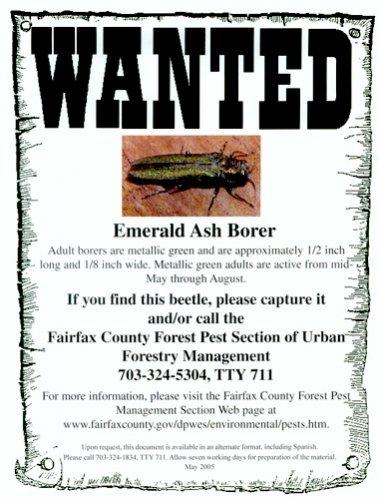If you're planning a trip to Shenandoah National Park, be aware that as of March 1 you won't be able to bring firewood into the park. The ban is an effort to stop the spread of a nasty beetle that could greatly impact the park's ash trees.
The Emerald Ash Borer is a destructive invasive exotic beetle that chews away on ash trees. As of 2009, the borer was said to be responsible for the deaths of tens of millions of ash trees throughout the Midwest and in some Eastern states, according to park officials. Currently, the closest documented borer infestation is in Fairfax County, Virginia, 55 miles east of Shenandoah’s northern boundary, the park says. Foresters across the state are working to control the spread of this devastating insect through quarantines, bans, and public education.
The borer is often spread by the movement of infested firewood. Over the last several years, EAB-infested firewood has been found at campgrounds, hunting camps, NASCAR events, rest stops, and picnic areas throughout the Midwest and Eastern U.S., the park said in a release. And since the park’s campgrounds and picnic areas are the most likely areas for EAB introduction into Shenandoah National Park, park managers are implementing the firewood ban effective March 1.
The regulation will require that visitors not bring any firewood (or wood scraps) into the park. Visitors will be allowed to gather dead and downed firewood in the park or purchase wood at Park Camp Stores. The park’s vendor’s sources have been approved and are being monitored for EAB. Additionally, visitors are encouraged to use charcoal for cooking fires.
White ash trees, comprising approximately 4 percent of the park’s overall forest, are found in 16 forest communities that together cover 65 percent of the park’s acreage. Given what is known about EAB infestations, an outbreak in Shenandoah could lead to the loss of white ash in the park and surrounding areas, according to park officials.
Shenandoah’s managers want to avoid the same widespread devastation to the ash population that the woolly adelgid has wrought on the Eastern Hemlock.


 Support Essential Coverage of Essential Places
Support Essential Coverage of Essential Places







Comments
More information on emerald ash borer can be found at www.emeraldashborer.info.